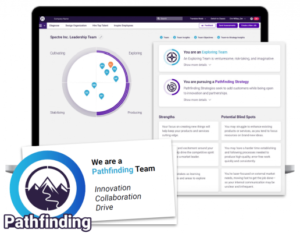
What is Team Discovery by The Predictive Index?
Unlock the full potential of your team with data-driven insights from Team Discovery™, helping you build a cohesive, high-performing unit aligned with your strategic goals.
Reading Time: 5 minutes
Recruiting without bias is a challenge that many hiring managers face, yet it is essential to prevent discriminating against candidates and make fair hiring decisions. Bias can impact the recruiting process by causing recruiters to miss out on highly qualified applicants and sometimes leading to poor hiring decisions. In fact, biases can influence our decisions to such an extent that we can make choices that favor one candidate or group over others, which can impact team satisfaction, a company’s bottom line and society in general.
It is crucial to recognize the types of unconscious biases that can occur during the hiring process to prevent them from affecting your decision-making. There are six common types of biases that recruiters need to be aware of.
You May Also Be Interested In
Are you gearing up for a job interview? As you prepare for your interview, it’s crucial to understand the various types of interviews, including the situational interview.

Is when your initial judgment or first impression of a candidate influences your feedback or decision. It can occur when the interviewer is affected by the candidate’s appearance, handshake, tone of voice, or video call background. Making hiring decisions based solely on first impressions can lead to poor hires because the judgments made about the candidate in the first few minutes of meeting them may not be an accurate indication of their skills or motivation.
it is best to evaluate a candidate in multiple contexts and give them the chance to leave multiple impressions.
This bias occurs when recruiters allow the opinions of others to affect their feedback or decision. It is easy to fall into the trap of going along with the team’s thinking, especially if a team member has a strong opinion about a candidate. However, this can lead to conformity bias, which is a form of bias.
Make sure you form your own opinion of a candidate by agreeing not to share opinions with colleagues too early. Document your evaluation before allowing it to be influenced by others.
This bias is when one major strength or weakness of the candidate, or one likable or dislikeable quality, influences the overall feedback or decision rather than thinking holistically. For example, the halo effect occurs when one positive characteristic of the candidate makes the recruiter overlook the other flaws, whereas the horns effect happens when one negative aspect of the candidate’s personality causes the recruiter to overlook their strengths.
Always back up your opinion with rational statements when discussing candidates and their qualities with your colleagues. This approach will help you to back up your gut feeling with clear, rational reasoning and inform your hiring team too.
Behavioral assessments can be an effective tool to help recruiters overcome the halo effect in recruitment. By providing objective data on a candidate’s behavior and skills, these assessments can help recruiters make informed hiring decisions that are not influenced by their subjective biases.
You May Also Be Interested In
Making a hiring decision is a crucial step for any company, and it’s important to ensure that the process is unbiased and fair. However, even the most experienced recruiters can fall prey to a phenomenon known as the halo effect.

This bias occurs when interviewers favor candidates who look like them or have something in common with them. According to a study by Northwestern University, most interviewers search for people who look like them or share their interests. However, this bias can undermine the hiring process by favoring certain candidates and ignoring highly qualified ones.
It is essential to focus on the candidate’s qualifications, experience, and skills.
Can happen when recruiters favor one gender over the other. It can occur in different forms, including gender stereotyping or not offering equal opportunities to candidates based on their gender.
Ensure that the interview questions and evaluation criteria are the same for all candidates, regardless of gender. Avoid asking questions that are based on gender stereotypes or assumptions, and focus on the candidate’s qualifications and experience.

This bias occurs when a recruiter forms an opinion about the candidate based on other similar candidates they have evaluated. It can lead to stereotyping and a lack character flaw or an aspect of their personality, influences your decision not to hire them.
Ensure that the evaluation criteria are comprehensive and include all relevant qualifications and experience. Avoid focusing solely on one or two characteristics of the candidate and make sure to consider them as a whole.
It is essential to avoid hiring biases because they are shaped by unconscious biases that influence the way we perceive reality and make decisions. If biases are left unchecked, we risk overlooking talented candidates and undermining Diversity, Equity, and Inclusion in the workplace. This can have negative impacts on team satisfaction, a company’s bottom line, and society in general.
By recognizing bias within ourselves, we can move towards unbiased hiring. This can help us choose from a more diverse talent pool, improve candidates’ application experiences, hire skilled candidates based on facts rather than feelings, avoid costly mis-hires, and create a sense of belonging that encourages team members to stay with the company longer. Having a diverse and inclusive team comes with many benefits.
You May Also Be Interested In
Small businesses rely heavily on the talent they hire, and as such, it is essential for them to be strategic in their recruitment process. It can be difficult to attract top talent, especially when competing with larger, more established companies.
For the past 10 years, we have been supporting the growth of start ups, scale ups, and SMEs. We show them how to incorporate more meaningful data to make better hiring decisions, which saves them time and money. We are well–equipped to handle the unique challenges of small businesses and help to level the playing field in the pursuit of top talent.
With our experience and resources, we are able to provide a smooth transition into the company culture and ensure that new hires have an enjoyable onboarding experience.
If you are interested in learning more or are ready to start your next hire, contact me today, I will be happy to help.
Let’s get started!
Dave Crumby
Founder at 360 Talent Solutions

Unlock the full potential of your team with data-driven insights from Team Discovery™, helping you build a cohesive, high-performing unit aligned with your strategic goals.

Explore how ‘MY PI: Using Science to Transform Your Workplace’ leverages behavioural science to revolutionise HR practices, offering in-depth insights, practical tools, and a vibrant community for HR professionals.

Join The Swiss Talent Optimisation Hub (STOH) to connect with HR professionals dedicated to leveraging Predictive Index tools and behavioural science to overcome unique challenges faced by Swiss businesses and drive organisational success.

Discover how Swiss companies can optimise their hiring and talent management strategies with the Predictive Index, a powerful tool that enhances workforce insights and decision-making, supported by Humanostics and 360 Talent Solutions.
| Cookie | Duration | Description |
|---|---|---|
| cookielawinfo-checbox-analytics | 11 months | This cookie is set by GDPR Cookie Consent plugin. The cookie is used to store the user consent for the cookies in the category "Analytics". |
| cookielawinfo-checbox-functional | 11 months | The cookie is set by GDPR cookie consent to record the user consent for the cookies in the category "Functional". |
| cookielawinfo-checbox-others | 11 months | This cookie is set by GDPR Cookie Consent plugin. The cookie is used to store the user consent for the cookies in the category "Other. |
| cookielawinfo-checkbox-necessary | 11 months | This cookie is set by GDPR Cookie Consent plugin. The cookies is used to store the user consent for the cookies in the category "Necessary". |
| cookielawinfo-checkbox-performance | 11 months | This cookie is set by GDPR Cookie Consent plugin. The cookie is used to store the user consent for the cookies in the category "Performance". |
| viewed_cookie_policy | 11 months | The cookie is set by the GDPR Cookie Consent plugin and is used to store whether or not user has consented to the use of cookies. It does not store any personal data. |